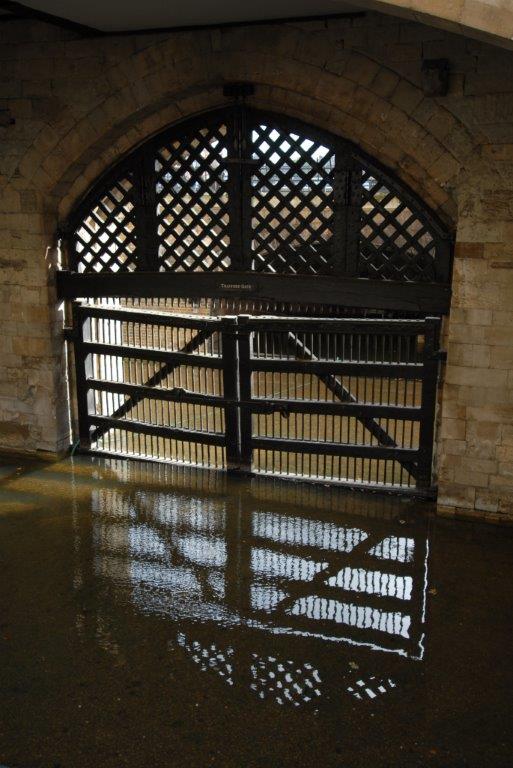The Tudors and the Tower
Chapter 4 : From Prisoner in this Place to Prince of this Land
Another unwitting figurehead for revolt in ‘Bloody’ Mary’s reign was her own half-sister, Elizabeth. Mary had soon come to resent her beautiful, charismatic sibling who steadfastly resisted her entreaties to conform to the traditional Catholic faith. Resentment soon turned to suspicion. Within a few short months of Mary’s accession, Thomas Wyatt led a revolt to place Elizabeth on the throne. Even though Elizabeth was almost certainly innocent of any involvement in the plot, Mary was taking no chances and had her sister brought to the Tower. It was a cold, wet March day in 1554 when Elizabeth arrived at the fortress. As she slowly mounted the steps next to St Thomas’s Tower (‘Traitors’ Gate’), she suddenly stopped and exclaimed:

‘Oh Lord!I never thought to have come in here as a prisoner; and I pray you all, good friends and fellows, bear me witness, that I come in no traitor, but as true woman to the queen’s majesty as any is now living.’
Elizabeth was eventually persuaded to move on into the Tower, and was taken to the same royal lodgings where her mother had been held prisoner prior to her execution. She was finally allowed to leave the Tower on 19 May – eighteen years to the day since her mother had been executed within the fortress.The irony cannot have been lost on her.
It may have been a growing awareness of her unpopularity that prompted Mary, in 1555, to issue instructions to the Constable of the Tower that nine men from the ranks of the Yeoman Warders were to patrol during the day, and six at night. Detailed instructions were also set down for securing the keys at night. This become known as the Ceremony of the Keys and has been performed every night since.
Upon Mary’s death in November 1558, the throne passed to her younger half-sister Elizabeth, who entered the Tower to a rapturous reception on 28 November. Quite what she felt upon returning to the fortress where she had been held prisoner during her half-sister’s reign and where her mother Anne Boleyn had met her death can only be imagined. But statecraft overcame any sensibilities, and Elizabeth remained there with her council for several weeks to decide the future course of policy.




